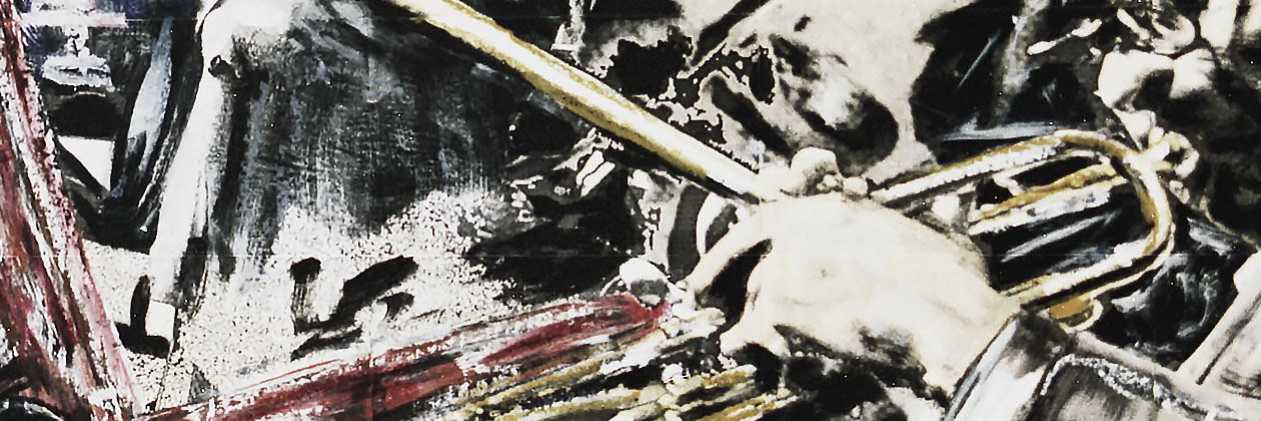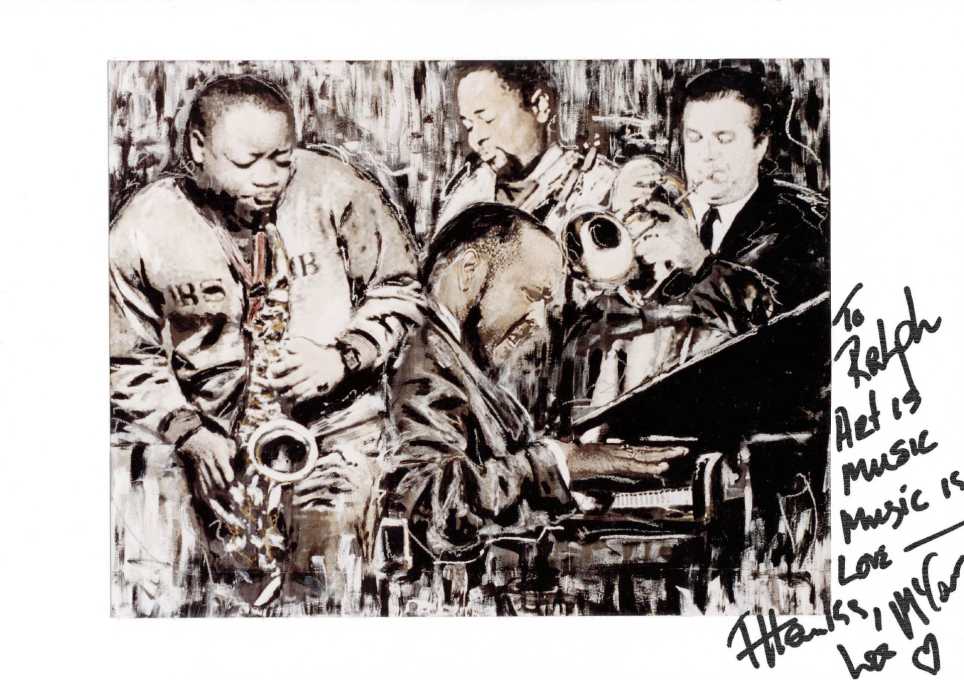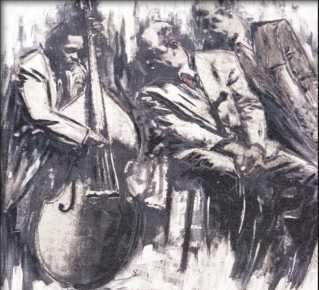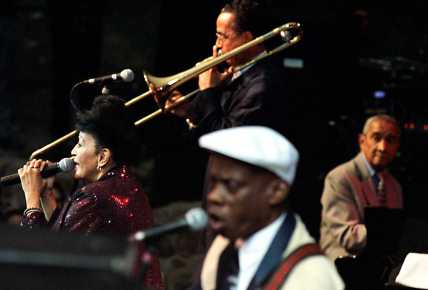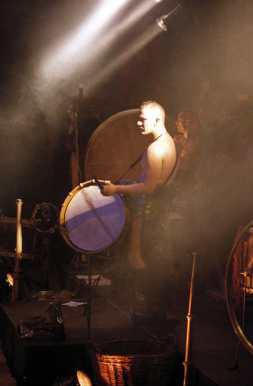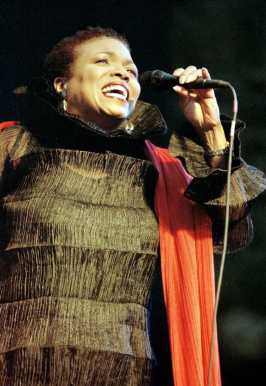Painting and music are sister arts, they say. Not twins who could replace each other without distinction. Yet so close to each other that one seems to recognize the one in the other; that a rhythm of lines and surfaces, colors and movements in a picture are transformed into a rhythm of tones, staccato or sounds, harmoniously in our minds, or that the lovely tones of music such as "onomatopoeia" can actually be seen. The family ties between painting and music seem most obvious when they are based on atmospheres, when they are impressions and imaginations. It becomes more difficult when the motif of the painting itself is a "musical" one. Then the relationship often degenerates into a pose, seems deliberate and constructed. Ralf Walraff's musical pictures, which are pictures of (jazz) musicians, are different.
Starting with photo series that Walraff takes at concerts, where he, like few other photographers, is allowed to get very close to the protagonists, a kind of scenic collage is created in a contemplative process, a condensing, intensifying process. Walraff practically composes an image from his photographic "concert recording" that has the musician as its theme. ...
Stefan Skowron, Aachen
... The portraits are the result of the collaboration between Ralf Walraff and musicians such as Candy Dulfer, Juan José Mosalini, Taj Mahal, Paco de Lucia and other prominent personalities of the current jazz and world music scene. Concert rehearsals, live performances or the ensuing small talk provided the basis for photographic studies in which both sides, sometimes deeply concentrated, sometimes relaxed and self-forgetting, immersed themselves in a kind of non-verbal communication.
Stefan Skowron
This direct contact gives the photographically fixed pose a form of expression of highest intensity. Each of these musical greats got involved in the collaboration with Ralf Walraff in a very personal and very different way: For example, he was a photographer who wanted to portray her at work and later paint her, but then everyone contributed intensively in their own way to the success of the "Sketches of Sound".
Aachener Zeitung

